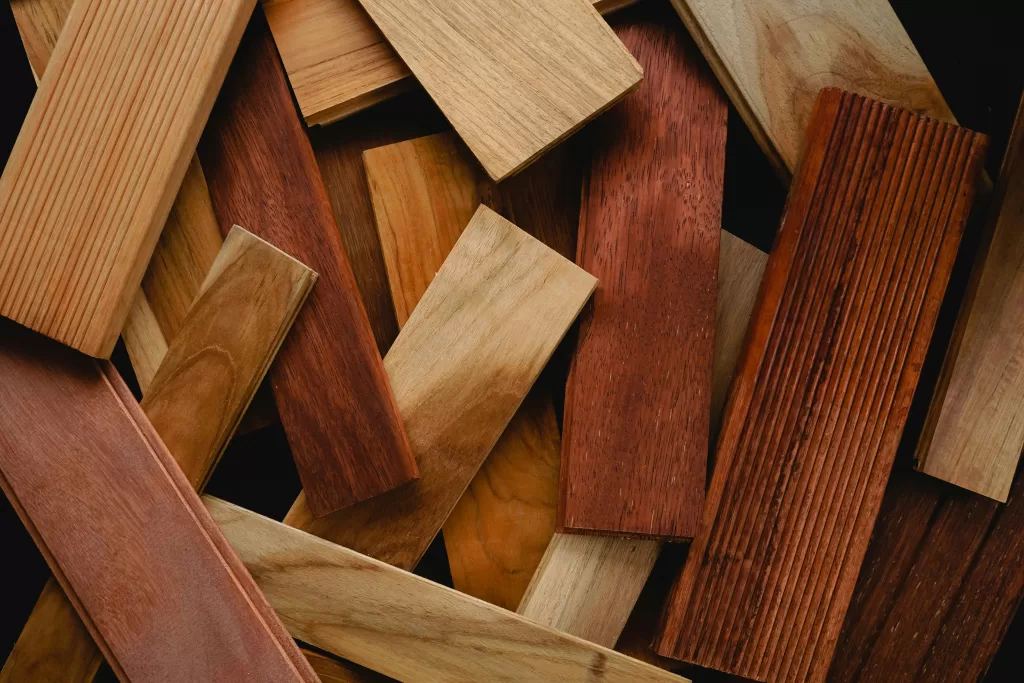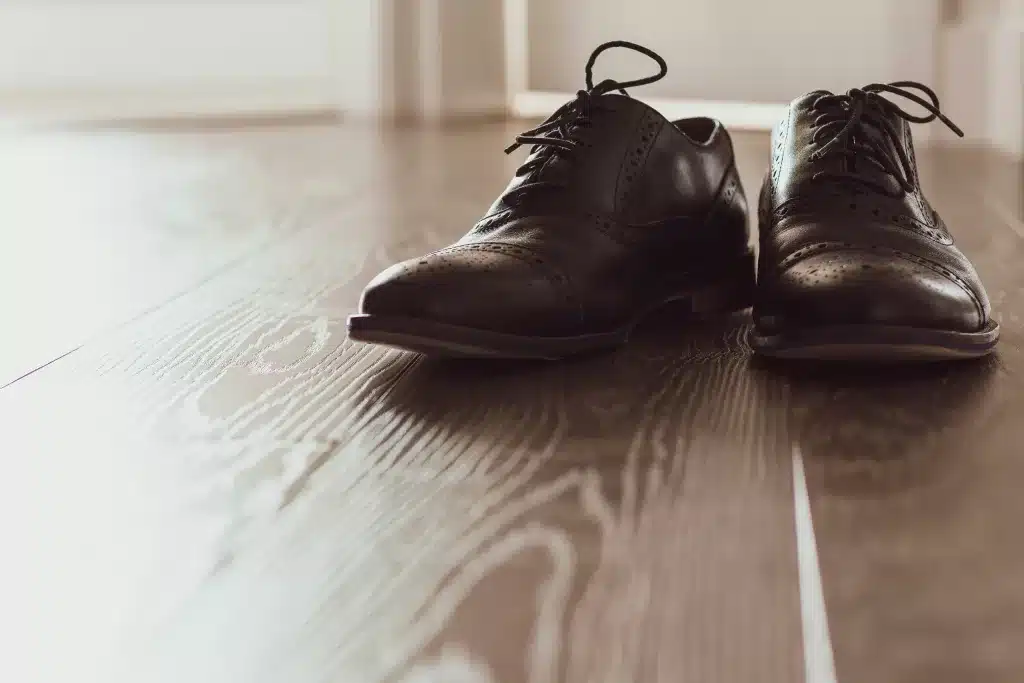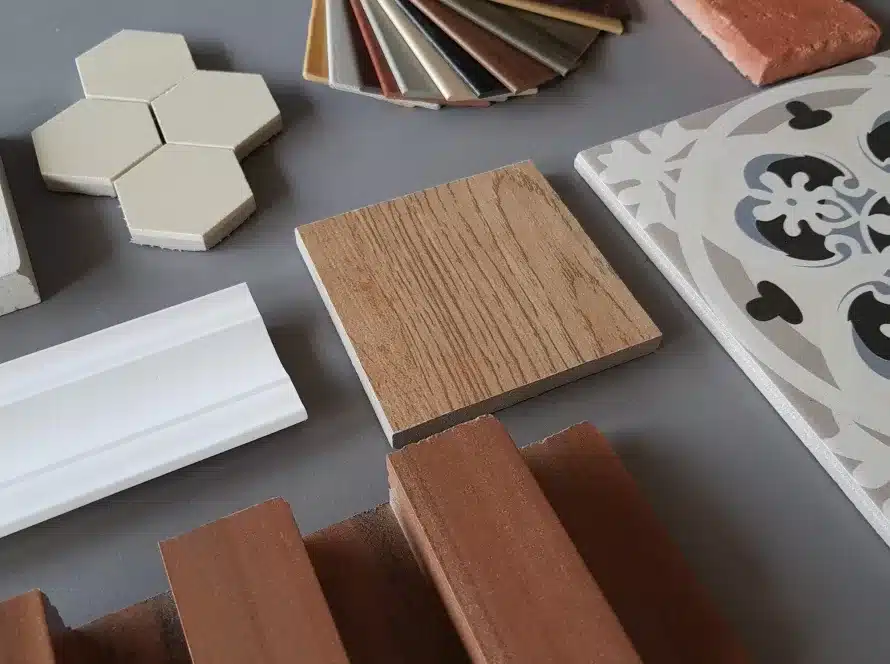Hardwood flooring is a hugely popular choice for kitchens, adding charm and warmth to the heart of your home. As a central element in kitchen design, the choice of flooring can significantly impact the overall look and feel of the space.
With its enduring popularity and reputation for durability, hardwood flooring emerges as a leading contender for homeowners seeking elegance and longevity in their kitchen floor.
In this blog post, we’ll consider into the advantages and drawbacks of installing hardwood flooring in your kitchen, providing valuable insights to help you navigate this important decision. Let’s get started.
Pros of Hardwood Flooring in the Kitchen

Hardwood flooring offers numerous advantages for kitchen spaces, making it a wonderful choice for homeowners. Let’s explore some of the key benefits.
Timeless Aesthetic Appeal
Hardwood flooring brings a timeless charm to your kitchen, enhancing its visual appeal and creating a warm, inviting atmosphere. Whether your style is traditional, modern, or somewhere in between, the natural beauty of hardwood adds character and sophistication to any kitchen decor.
Warmth and Comfort Underfoot
One of the most appreciated features of hardwood flooring is its inherent warmth and comfort underfoot. Unlike cold tile or stone, hardwood provides a cozy surface that feels pleasant to walk on, especially in bare feet during chilly mornings or late-night kitchen visits.
Durability and Longevity
Hardwood flooring is renowned for its exceptional durability and longevity, standing up well to the demands of a busy kitchen. With proper care and maintenance, hardwood floors can last for decades, maintaining their beauty and structural integrity even in high-traffic areas prone to spills and foot traffic.
Ease of Maintenance and Cleaning
Maintaining hardwood flooring in the kitchen is relatively easy compared to other materials. Routine sweeping or vacuuming, along with occasional mopping using a damp cloth or hardwood floor cleaner, is usually sufficient to keep the surface clean and free of debris.
Unlike carpeting, hardwood floors don’t trap dust, allergens, or odors, contributing to a healthier indoor environment.
Ability to be Refinished
One of the significant advantages of hardwood flooring is its ability to be refinished multiple times, extending its lifespan and restoring its original beauty.
Over the years, scratches, dents, and wear may develop on the surface of hardwood floors, but refinishing allows you to sand away imperfections and apply a fresh coat of finish, revitalizing the appearance of your kitchen floor.
Cons of Hardwood Flooring in the Kitchen
While hardwood flooring boasts many advantages, it’s essential to consider some potential drawbacks. Here’s what you should be aware of.
Susceptibility to Water Damage
One of the primary concerns with hardwood flooring in the kitchen is its susceptibility to water damage. Spills and leaks from sinks, appliances, or even pet bowls can seep into the wood, leading to warping, swelling, or discoloration if not promptly addressed.
Vulnerability to Scratches and Dents
Despite its durability, hardwood flooring is prone to scratches and dents from dropped utensils, heavy furniture, or pet claws. While certain wood species and finishes may offer greater resistance to damage, it’s essential to take precautions to protect the surface from everyday wear and tear.
Costlier Upfront Investment
Hardwood flooring typically requires a higher initial investment than alternative flooring materials such as vinyl or laminate. While the long-term durability and aesthetic appeal of hardwood may justify the higher cost for some homeowners, others may find it prohibitive for their budget.
Potential for Noise and Echo
In open-concept kitchens or homes with high ceilings, hardwood flooring may amplify noise and echo, especially when walking with shoes or moving furniture.
Area rugs or strategically placed furniture can help mitigate this issue, but it’s something to consider for those sensitive to noise levels.
Not for High-Moisture Environments
While hardwood flooring is suitable for most areas of the home, it’s not recommended for high-moisture environments such as bathrooms or laundry rooms.
Excessive moisture can cause wood to swell, buckle, or develop mold and mildew, compromising its structural integrity and appearance over time.
Tips for Making Hardwood Flooring Work in Your Kitchen
To ensure the success of hardwood flooring in your kitchen, there are a number of expert tips you should follow. These include proper installation techniques, choosing the right wood species and finish, and more.
Proper Installation Techniques
Ensure that your hardwood flooring is installed correctly by hiring experienced professionals. Proper installation techniques, including acclimating the wood to the kitchen environment and using appropriate subfloor materials, will help prevent issues such as buckling or gaps.
Choosing the Right Wood Species and Finish
Select a hardwood species and finish that can withstand the rigors of the kitchen environment. Dense woods like oak, maple, or cherry are excellent choices for durability, while finishes like polyurethane offer added protection against scratches and spills.
Preventive Measures Against Water Damage
Minimize the risk of water damage by promptly wiping up spills and avoiding prolonged exposure to standing water. Consider installing a waterproof barrier beneath the hardwood flooring, especially in areas prone to moisture, such as near sinks and dishwashers.
Using Rugs or Mats
Place rugs or mats in high-traffic areas of the kitchen to protect the hardwood flooring from wear and tear. These protective coverings not only add a decorative touch but also provide an extra layer of defense against scratches and dents caused by foot traffic and furniture movement.
Regular Maintenance and Inspections
Maintain your hardwood flooring with routine cleaning and inspections to keep it looking its best. Sweep or vacuum regularly to remove dirt and debris, and mop with a damp cloth or hardwood floor cleaner as needed.
Periodically inspect the flooring for signs of wear, damage, or moisture issues, addressing any issues promptly to prevent further damage.
Enhancing Kitchen Design with Hardwood Flooring
Incorporating hardwood flooring into your kitchen design can elevate the overall aesthetic while providing practical benefits. You can consider these design-focused tips to make the most of hardwood flooring in your kitchen.
Seamless Transition
It’s a good idea to opt for hardwood flooring that complements the existing design elements in your kitchen, such as cabinetry, countertops, and backsplash. Choose wood tones and finishes that create a cohesive look and enhance the overall ambiance of the space.
Statement Patterns
You can also explore unique installation patterns, such as herringbone or chevron, to add visual interest and texture to your kitchen floor. These intricate patterns can make a bold design statement while showcasing the natural beauty of hardwood flooring.
Contrast and Balance
Another idea is to use hardwood flooring to create contrast and balance in your kitchen design. Pair light-colored hardwood with dark cabinetry for a striking contrast, or vice versa, to create a balanced and visually appealing space.
Open Concept Flow
Finally, extend hardwood flooring from the kitchen into adjoining areas, such as the dining room or living space, to create a seamless flow and enhance the sense of continuity throughout your home. This cohesive design approach can make smaller spaces feel larger and more interconnected.
Alternative Flooring Options for the Kitchen
If hardwood flooring isn’t the right fit for your kitchen, there are other options to consider. These include tile, vinyl, laminate, engineered hardwood, and concrete.
Tile Flooring
Tile flooring is a popular choice for kitchens due to its durability, water resistance, and endless design options. Available in ceramic, porcelain, or natural stone, tile flooring offers versatility in style and color, making it easy to achieve the desired aesthetic for your kitchen.
Vinyl Flooring
Vinyl flooring is an affordable and resilient option for kitchens, offering water resistance, easy maintenance, and comfort underfoot. With advancements in technology, vinyl flooring now comes in a variety of styles, including realistic wood and stone looks, providing a budget-friendly alternative to hardwood.
Laminate Flooring
Laminate flooring mimics the look of hardwood at a fraction of the cost, making it an attractive option for budget-conscious homeowners.
With its durable and scratch-resistant surface, laminate flooring is suitable for high-traffic areas like the kitchen, offering easy installation and minimal maintenance requirements.
Engineered Hardwood Flooring
Engineered hardwood flooring combines the natural beauty of hardwood with enhanced stability and moisture resistance, making it an ideal choice for kitchens.
Constructed with multiple layers of wood veneers bonded together, engineered hardwood is less prone to warping and expansion than solid hardwood, offering a practical solution for kitchen flooring.
Concrete Flooring
Concrete flooring is a modern and industrial-inspired option for kitchens, offering durability, versatility, and a sleek aesthetic. With various finishes available, such as polished, stained, or stamped, concrete flooring can be customized to complement any kitchen style, from minimalist to rustic.
Upgrade Your Kitchen Space With Hardwood Flooring

Compare Quotes from Top-rated Flooring contractors in your area.

The bottom line is that hardwood flooring offers timeless beauty and practical benefits for kitchens, but proper maintenance and strategic design considerations are essential for maximizing its potential.
Whether you’re renovating your kitchen or building a new home, Alpha Living provides a convenient platform to connect homeowners with skilled contractors tailored to their specific needs.
Simply enter your zip code and desired home service, and let Alpha Living handle the rest. Click here to get started.





Facebook
Comments